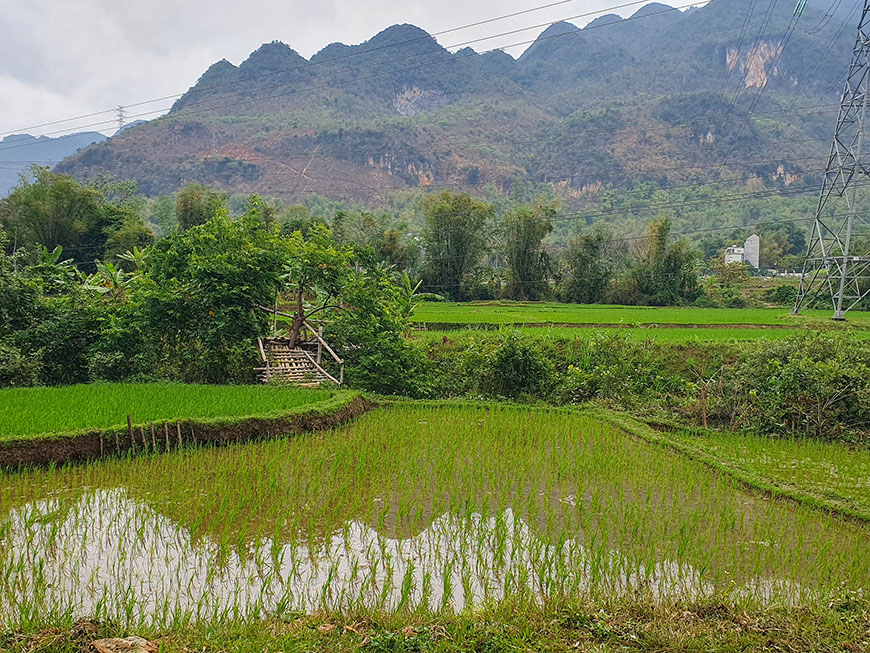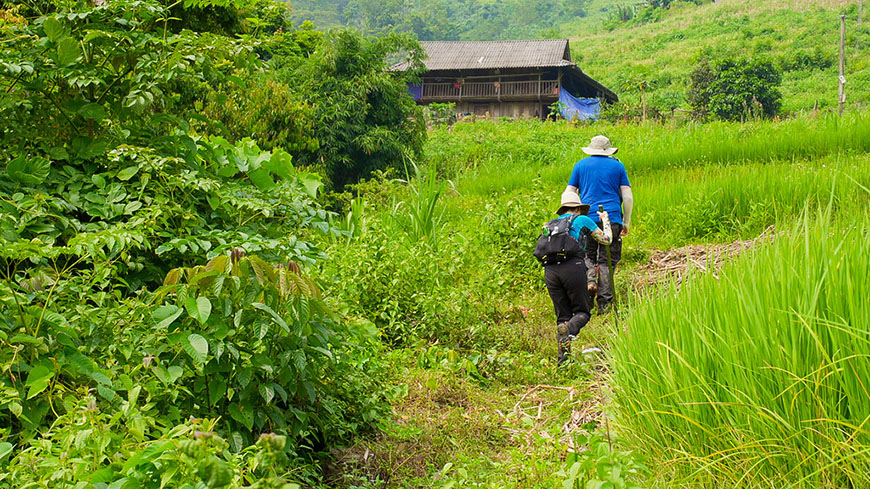Warm-up
Northern Vietnam, with its mist-covered mountains, terraced rice fields, and traditional villages, is a popular destination for hikers. However, the rise of tourism poses new challenges in terms of environmental preservation and respect for local cultures. That's why it's essential to opt for responsible trekking, an approach that allows you to explore the region while contributing to its sustainable development.

Trekking in Northern Vietnam is a unique experience - Credit : Mr Linh's adventures
Why choose responsible trekking?
The development of tourism in Northern Vietnam has gone through various phases, highlighting the importance of a responsible approach.
In the 90s, Sapa opened the doors to a new adventure: trekking. Away from the beaten paths, travelers discovered a pristine landscape and welcoming communities. The infrastructure was rudimentary, but this authenticity was precisely what attracted nature lovers.
Today, the success of Sapa has its downsides. Once peaceful trails are becoming increasingly crowded. Waste accumulates, threatening this fragile environment. And interactions with local populations, though warm, are sometimes unbalanced.
For the future, it is urgent to rethink tourism in Sapa. Responsible trekking is the key: less frequented routes, rigorous waste management, respect for local cultures, and equitable distribution of income. Thus, future generations will also be able to discover the beauty of Sapa while preserving this unique heritage.
Benefits of responsible trekking
Responsible trekking is a journey where everyone wins, ensuring an authentic experience while minimizing its impact on the environment. By favoring preserved routes, respecting indigenous customs, and supporting the local economy, travelers contribute to preserving Vietnam's natural beauty and improving the living conditions of its people.

Sapa is the historical gateway to trekking in Vietnam - Credits : Mr Linh's Adventures
Must-visit trekking spots in Northern Vietnam
Sapa region
Nestled at 1500m altitude, Sapa is the historical gateway to trekking in Vietnam. The trails wind through terraced rice fields, offering both spectacular and serene views. Treks can range from simple day walks to multi-day circuits, passing through villages like Ta Van or Muong Hoa. For the more adventurous, climbing Mount Fansipan (3,143m) presents a challenging feat, provided it's done with respect for the surroundings.
Mr. Linh's Tip: Choose local agencies and homestays to support the communities.

Ha Giang Province, the Vietnam's last frontier - Credit : Mr Linh's Adventures
Ha Giang Province
Often called "Vietnam's last frontier," this region, currently less touristy than Sapa, offers spectacular karst landscapes. Ma Pi Leng Pass and Meo Vac Valley are highlights of any trek in the region. The more technical trails require good physical condition but reward hikers with breathtaking views of the sculpted mountains.
Mr. Linh's Tip: Commit to respecting the environment and supporting local initiatives.

Mai Chau and Pu Luong are two peaceful valleys,ideal for a first hike in Vietnam - Credit : Mr Linh's Adventures
Mai Chau and Pu Luong
Mai Chau and Pu Luong are two peaceful valleys, easily accessible from Hanoi, offering gentler hikes amidst rice fields and traditional villages. Ideal for a first taste of trekking in Vietnam, they allow a blend of walking and cultural immersion.
Mr. Linh's Tip: Alternate landscape exploration with local cultural activities.

Responsible trekking in Ba Be National Park - Credit : Mr Linh's Adventures
Ba Be National Park
A still-preserved natural gem, Ba Be offers a unique experience combining overland trekking and responsible lake navigation. Jungle trails allow for observing local wildlife, while limestone caves speak of the region's geological history. Hiking can be combined with traditional boat navigation.
Mr. Linh's Tip: Choose environmentally friendly service providers.
Preparation tips for responsible trekking in Northern Vietnam
- ✓ Best periods: October to March is ideal. Avoid the rainy season (June to September) if you're not experienced.
- ✓ Choosing agencies: Opt for local agencies committed to sustainable development and favor small groups.
- ✓ Physical preparation: Train regularly and equip yourself properly.
- ✓ Basic equipment: A good backpack, sturdy hiking shoes, and a first aid kit are essential.

Ba Be Jungle trekking - Credit : Mr Linh's Adventures
Additional suggestions
- ✓ Learn some Vietnamese words to better interact with locals.
- ✓ Respect the environment: Do not leave waste behind and stay on marked trails.
- ✓ Keep an open mind to discover Vietnam's cultural richness.
Responsible trekking, beyond a simple hike
Responsible trekking is an opportunity to explore pristine nature, meet welcoming communities, and contribute to a more sustainable future. By choosing this approach, you will have an unforgettable experience while leaving a positive impact on your journey.
Going further: